Weight 1 cub. m of brick and how to measure it
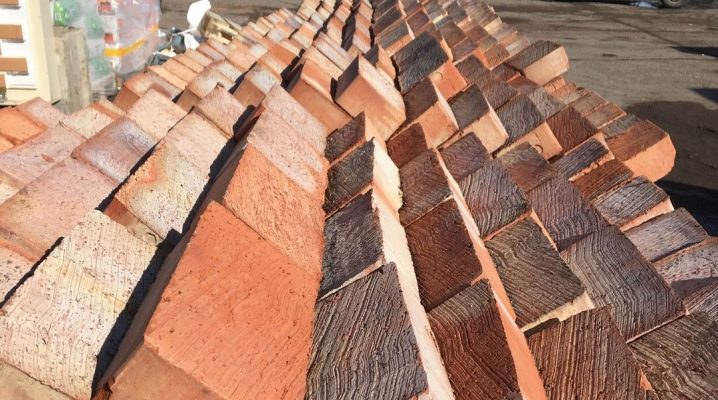
Have you decided to build a house or expand an existing one? Maybe add a garage? In these, and in other cases, calculations of the weight of 1 cubic meter will be needed. m of brick. Therefore, it will be useful to know about possible ways to measure it.
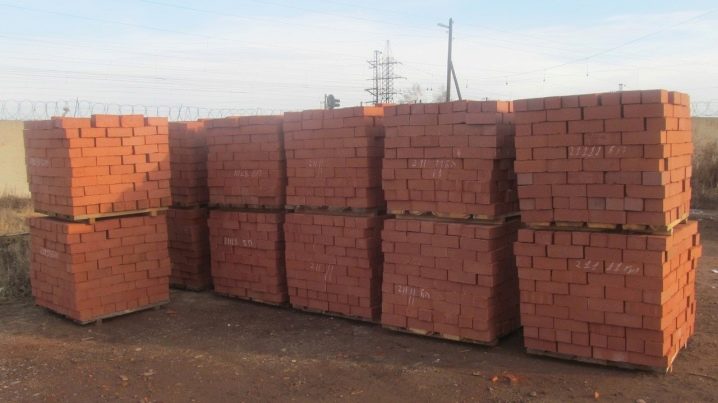
Features of building material
In many respects, brick has remained the best material, especially for the construction of walls in residential premises.
Its advantages are obvious.
- A brick wall retains heat well. In such a house, it is cool in summer and warm in winter.
- The strength of structures made of this material is well known.
- Excellent sound insulation.
- Affordability.
- Relative ease of transportation and use.


Over the centuries, the brick has changed little, of course, its dimensions were not always the same as are considered common in our time. In the XVII - XVIII centuries. was built of bricks, which are one and a half times larger than the modern ones. Accordingly, the weight of such a product was higher.
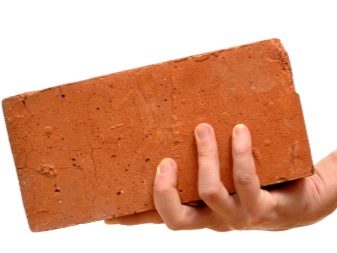

The relationship of quantity and weight
Once you've made the decision to build with bricks, it's only natural that the next step is to figure out the amount of building material you will need. This, in turn, will determine the cost of the entire project. Having designed the walls, you will have to calculate the ratio of length to height, in other words, area.
Do not forget that the wall thickness is not always half a brick, sometimes a brick wall or even thicker is required (outer walls of a residential building).
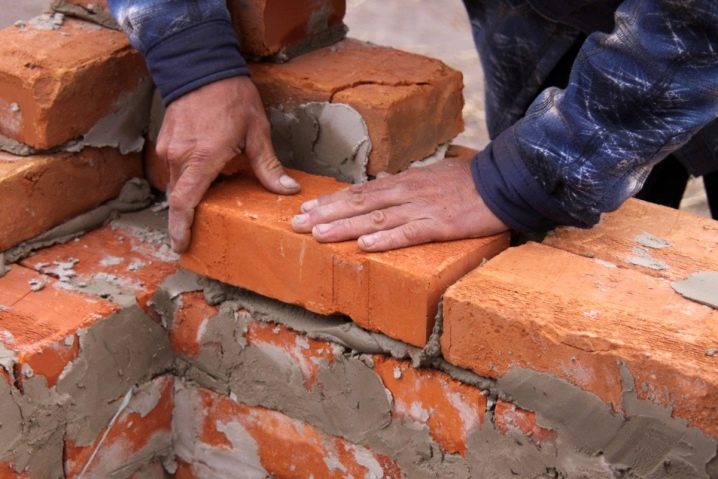
But that's not all, there must be a suitable foundation under the new wall.
If its strength is insufficient, stresses may appear, which will lead to the formation of cracks and, in especially critical cases, to the collapse of the entire wall or its fragments.
Of course, there is no such thing as an overly strong foundation, but it may turn out to be unreasonably expensive.
Summing up all the possible miscalculations, you can imagine how important it is to accurately calculate the weight and volume of the planned materials. Quite logically, the question arises, how much does one brick weigh? This is, so to speak, an elementary unit, knowing the weight of which, it is possible to determine the weight of 1 cubic meter. meters of products, convert indicators from pieces to tons.
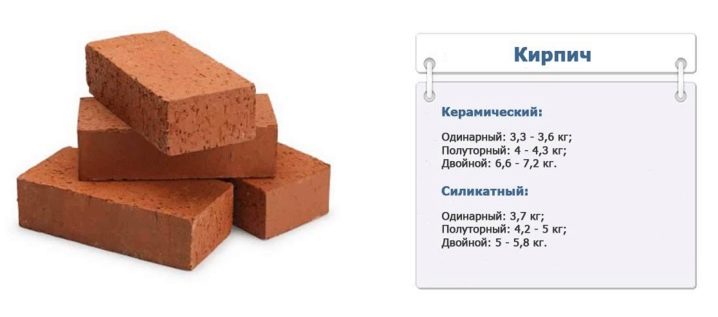
What is a brick?
The weight of one piece often determines the weight of the material from which the brick is made. For the ceramic version, which has received the common name "red", clay and water are the starting materials. The composition is very simple, the clay used for the production is different. New and old bricks may differ in weight, the second often has a higher content of absorbed moisture, which makes its specific gravity large. However, excess moisture evaporates easily over time.
Manufacturing technology can affect the weight of the finished product. You can find damp, insufficiently seasoned brick, the wall of which is doomed to collapse under its own considerable weight, especially in the presence of water.
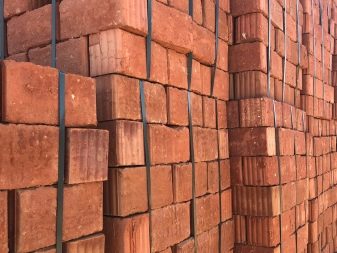
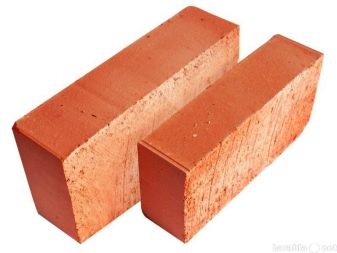
The weight of one piece of red brick varies within fairly large limits: from one and a half kg to almost 7 kg.
"Red" is produced in several forms.
- Single... Its size is the most common 250x125x65 mm, weighs from 1.8 to 4 kg.
- One and a half, respectively, higher (88 mm), the other parameters are the same as for a single. The weight is, of course, more (up to 5 kg).
- Double... Its height is about twice the single one. The weight of the product reaches 6 - 7 kg.

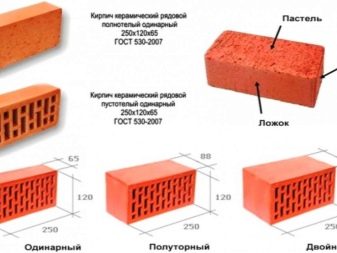
A special brick is produced for the walls, which will later be plastered, it is called ordinary and is distinguished by special grooves on one side.
Facing is used for outdoor decoration and has a higher surface quality. Solid brick is used for laying load-bearing walls and foundations; it has no technological voids and can weigh up to 4 kg. Facing often happens with all sorts of voids and partitions, it is called hollow. Hollow weight is much less (about 2.5 kg). There is a hollow and rougher in-line brick.

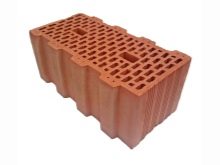
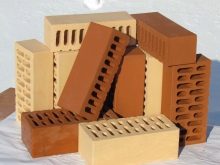
How to calculate weight?
They sell the material on wooden pallets. So it can be packed more tightly, and loading and unloading operations can be carried out using a crane or hoist. The permissible weight of a pallet of bricks according to building codes should not exceed 850 kg, taking into account the weight of the pallet itself (about 40 kg), although in reality it is usually larger. It is convenient to count products on a pallet, as they are stacked in the form of a cube.
The weight of a cubic meter of an ordinary single solid brick is about 1800 kg, a slightly smaller volume is included on the pallet, weighing up to 1000 kg. One cubic meter of one and a half material weighs about 869 kg, about the same volume fits on a pallet. The weight of a cubic meter of double bricks reaches 1700 kg, about 1400 kg can be stacked on a pallet. That is, the weight of one pallet of different products will not be the same.
Often the average weight of a pallet of bricks is equated to a ton, these calculations are used to determine the cost of one pallet.
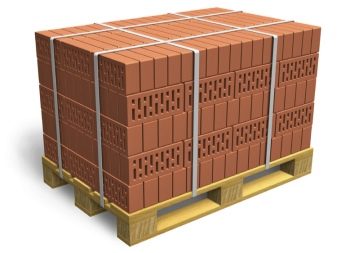
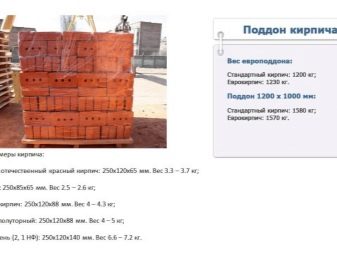
It is impossible not to mention the so-called white brick, it is made from quartz sand and lime, so it is on sale under the name silicate. In the 20th century, it became very widespread. This material is much denser than the previous one, it is distinguished by even greater sound insulation. White bricks are also not the same. A solid single sand-lime brick weighs about 4 kg, one and a half up to 5 kg. Sometimes it is hollow, its weight: single about 3 kg, one and a half almost 4 kg, double more than 5 kg. It can also be facing, such a brick is also hollow, usually one and a half, less often double. The first weighs about 4 kg, the second almost 6 kg.
The pallet holds about 350 pieces, thus, the mass of a single solid brick pallet will be about 1250 kg.
You can also calculate the approximate mass of the pallet of other types of sand-lime bricks. And, of course, the weight of 1 cubic meter of material is not equal to the weight of the pallet: a full-bodied single one will weigh about 1900 kg, one and a half more than 1700 kg. Hollow single is already more than 1600 kg, one and a half about one and a half tons, double about 1300 kg. Facing silicate brick, which is made with voids, is somewhat lighter: one and a half about 1400 kg, double about 1200 kg. But there are always discrepancies associated with some technological differences between products from different manufacturers.
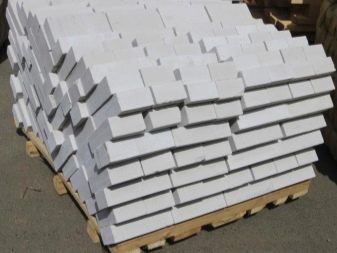

Sometimes you need to know the mass of brick fighting when dismantling walls or even entire buildings, this issue becomes relevant. A cubic meter of battle cannot be translated into pieces. So how much does a broken brick weigh? The volumetric weight (kilogram / m³) is used for calculations. The accepted norm for calculating the weight of brick breakage is 1800-1900 kg per cubic meter.
A summary table by brick weight is in the next video.












The comment was sent successfully.